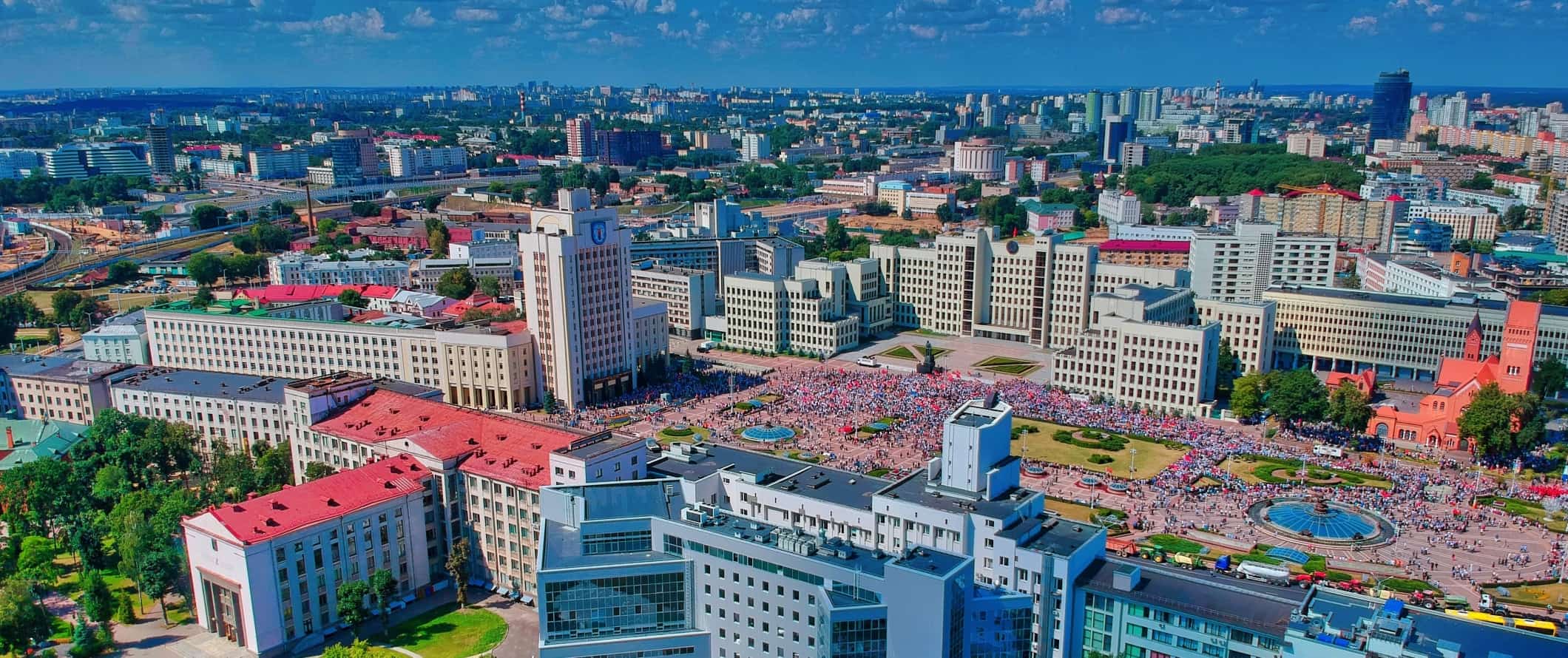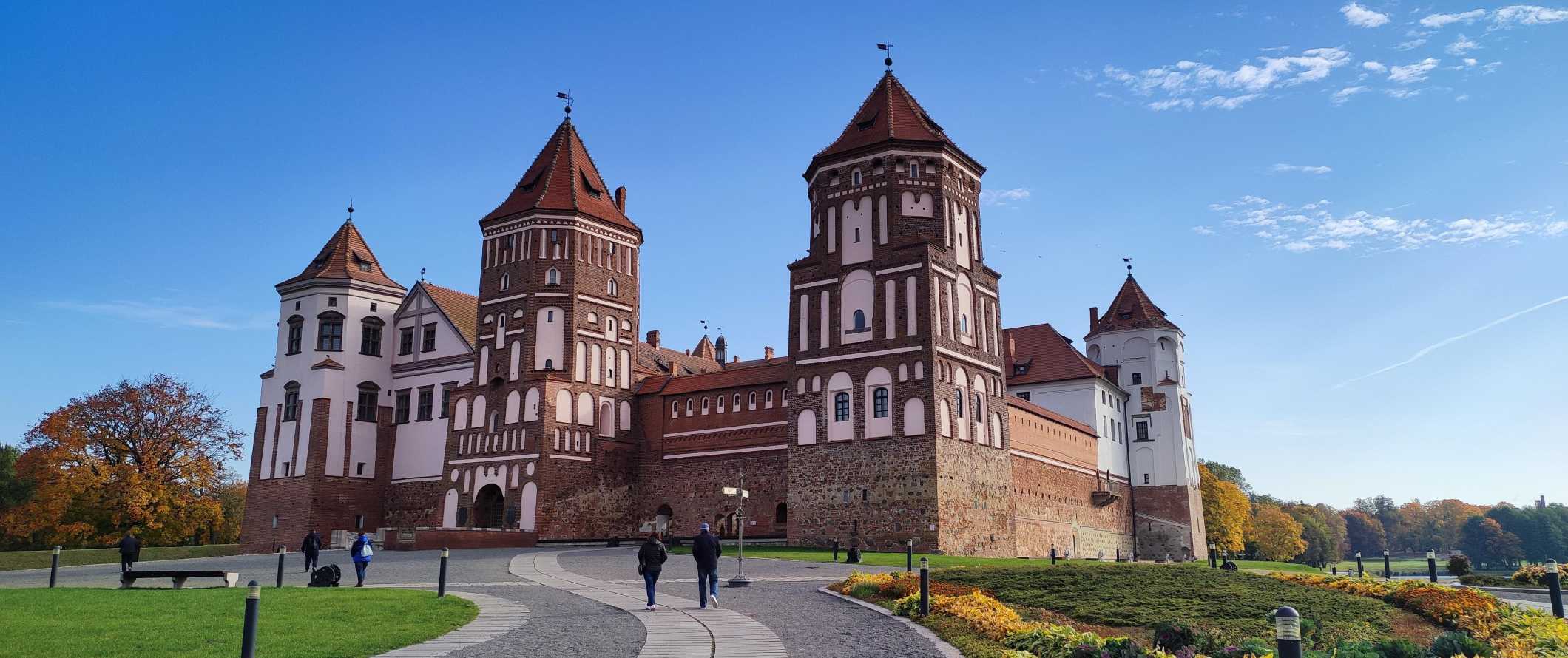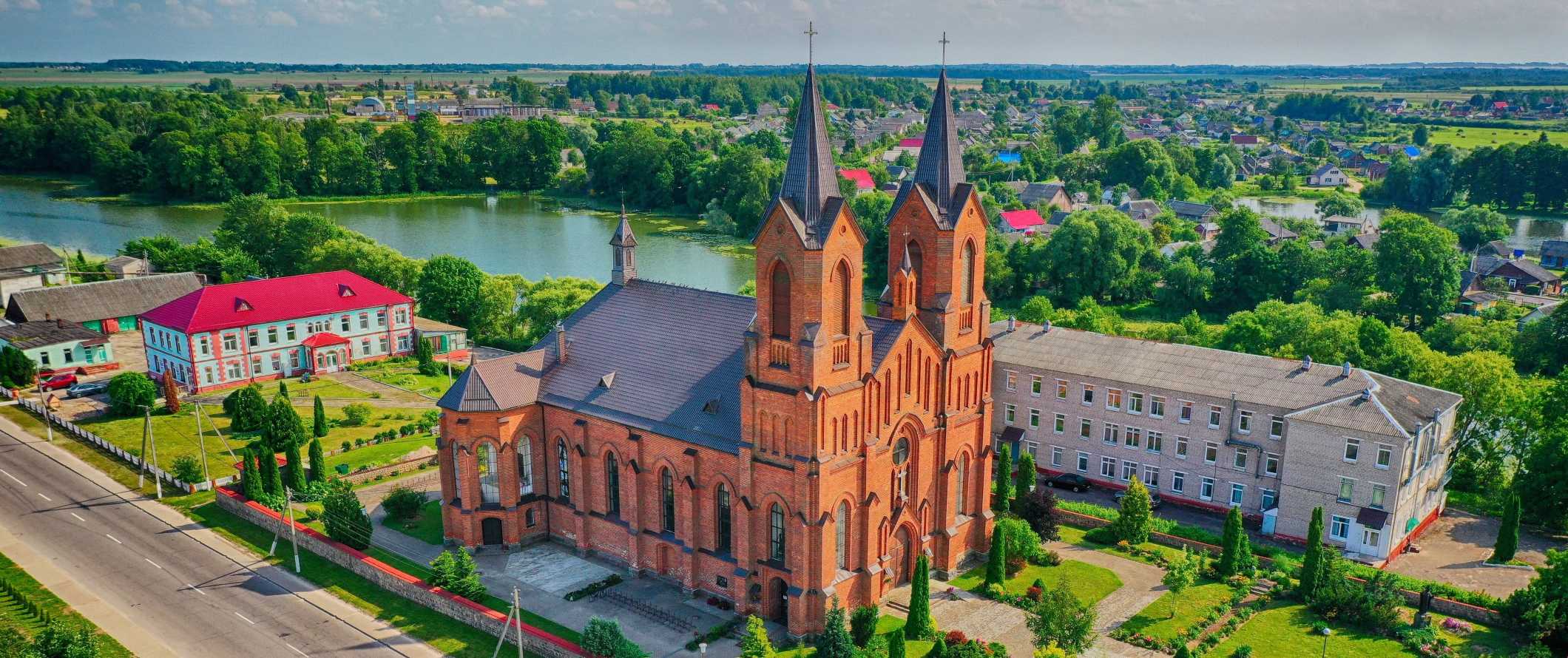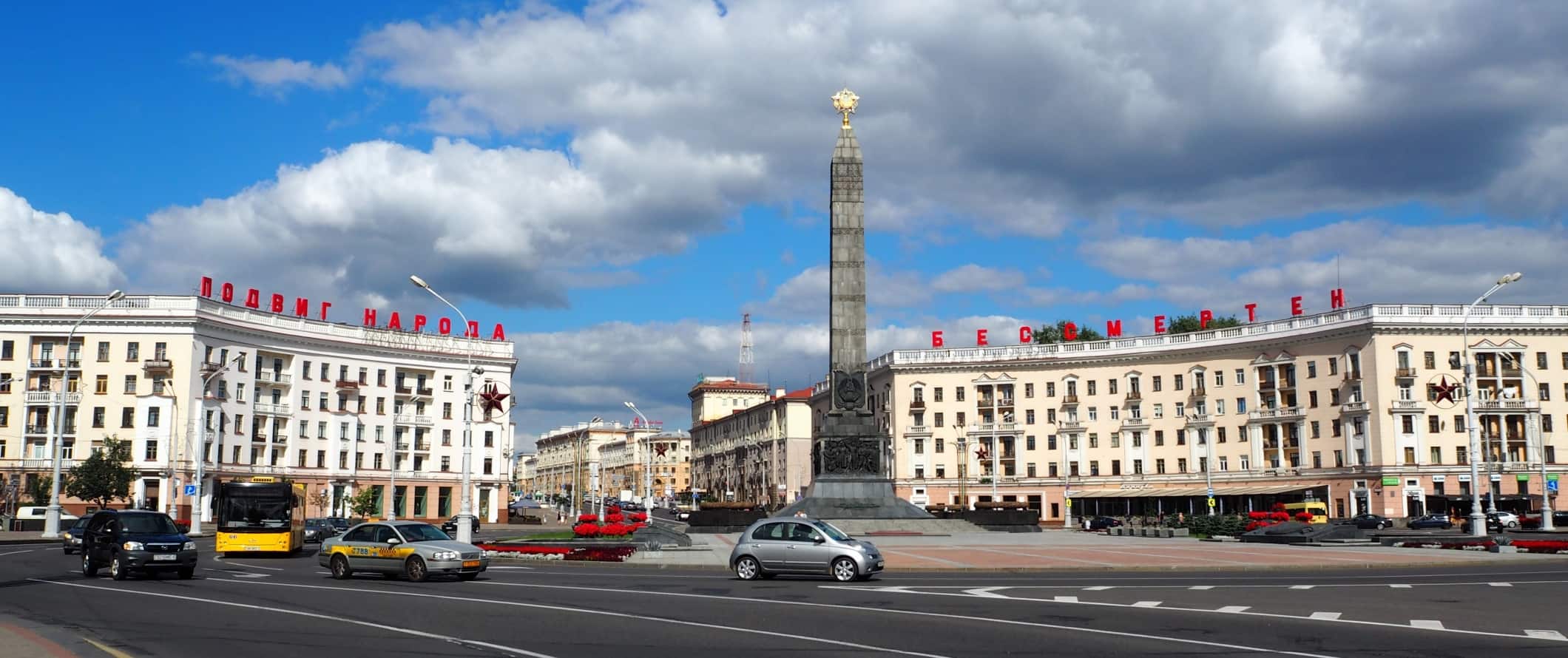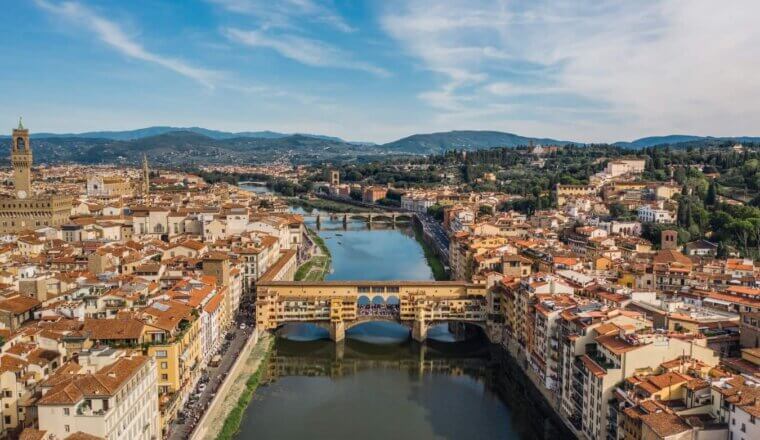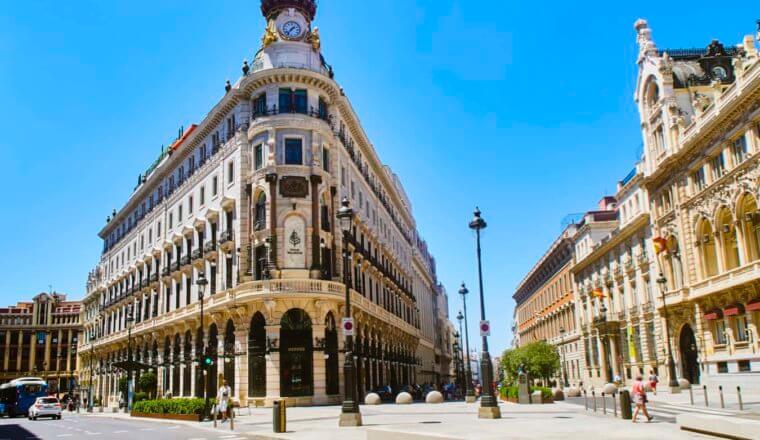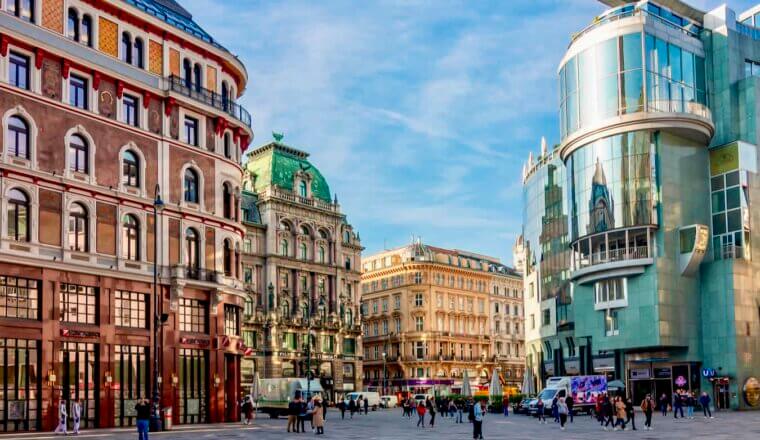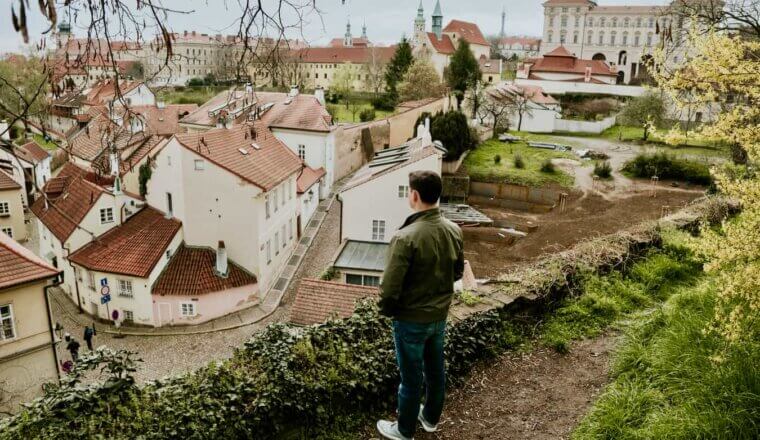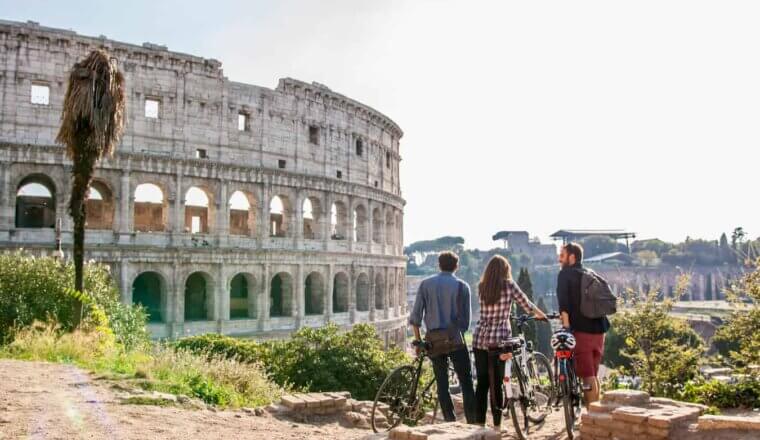Located in Eastern Europe between Ukraine and the Baltics, Belarus is a huge country that sees very few tourists. And while the country is ruled by “Europe’s last dictator,” thanks to its recently-relaxed visa rules, visiting Belarus has become a lot easier in recent years.
For those who love the outdoors, over half of the country is forested, including Bialowieza, the oldest woodland in Europe. The country is full of lakes and rivers where locals and intrepid travelers can fish, canoe, kayak, or camp out in pristine nature untouched by the outside world. Belarus is an overlooked destination by nature-loving travelers so you’ll see very few tourists vying for space here.
And Minsk, Belarus’s capital, is a lively and affordable city full of Stalinist architecture contrasted against antiquated churches and flower-filled city squares. Be sure to enjoy its cafe culture and lively nightlife for a few days before moving on to quieter cities like Brest and Hrodna, or into the countryside where rare European bison roam.
While there is mild tension between Belarus and the rest of Europe, the country is a budget-friendly destination perfect for anyone looking to get off the beaten path and explore a region untouched by the hordes of tourists found in Western Europe.
This travel guide to Belarus can help you plan your trip, save money, and make the most of your visit!
Table of Contents
Top 5 Things to See and Do in Belarus
1. Wander Minsk
Minsk, the capital of Belarus, is the first stop for most visitors. Much of its original architecture was destroyed during World War II. Visit the Museum of the Great Patriotic War, the Orthodox Church of St Mary Magdalene, and some of Minsk’s many WWII memorials.
2. Tour Mir Castle
The 16th-century Mir Castle is a favorite for Belarusians, and most locals consider it the most beautiful castle in the country. Its red-and-white brick exterior and towers cast a striking reflection in the castle’s pond. The interior has been restored to show what life looked like back in the time of the wealthy Radziwills family who lived here from 1568 to the 1840s. The Radziwills were a powerful magnate family originating from Lithuania that owned a lot of property in Belarus and beyond. The meticulously manicured gardens are beautiful too. The exterior portions (courtyard and parks) are free and admission to the castle is 14 BYN for adults, 7 BYN for students, and 3 BYN for an audio guide.
3. Explore Braslav Lakes National Park
The 300 pristine blue lakes in this area are enveloped by the countryside’s thick forests, rolling hills, and giant boulders left behind from glaciers. Come here for camping, fishing, bird watching, rock climbing, and bouldering.
4. Tour Polotsk
Polotsk is the oldest city in Belarus, dating back to 862. The many museums and historic sites here explore this city’s extensive past. Be sure to see the Saint Sophia Cathedral, the National Polotsk Historical Museum, and the medieval Boris Stones.
5. Visit Belovezhskaya Pushcha National Park
This park is one of the few places in the world where you can see European Bison in their natural habitat, as well as the Eurasian elk. There are numerous hiking and biking trails in the park. The 6-kilometer (4-mile) Dokudovo route is the best chance to see bison.
Other Things to See and Do in Belarus
1. Visit Grodno
The city of Grodno sits on the western border of Belarus. Most people come here to see the 12th-century Kalozha Church, considered to be the oldest church in Belarus. While the outside is dull, the inside has colorful geometrical ornaments and crosses, and the floor is made up of brown, green, and yellow plates. Be sure to also spend a few hours in the Old Castle’s Grodno History and Archaeology Museum, which walks you through the history of the region. It contains artifacts from the area, including mammoth tusks, Neolithic spears, medieval armor, and a large collection of rare and antique books. Admission is 5 BYN.
2. Take a day trip to Dudutki
The Dudutki Ethnological Museum Complex is a “living museum” located outside of Minsk. It recreates life in rural Belarus from the 17th-20th centuries, though most buildings are from the 19th century. The complex includes a courtyard with a creamery (where you can sample handmade cheese), a bakery (again, fresh samples!) a pottery workshop, a woodworker’s shop, a windmill, a historic wooden church, and an area where you can learn how people forged horseshoes and armor. You can also try samorgon, a potent moonshine made exclusively in the Dudutki territory. The museum hosts festivals throughout the year, such as a blacksmiths’ festival, various traditional feasting days, Pancake Week (the last week before Lent), and special Christmas activities. It’s 14 BYN to visit, or 23 BYN with a guide (which I suggest, as English signage is limited).
3. Spend time in Pripyatsky National Park
Pripyatsky National Park is known as the “Lungs of Europe” for its natural landscape of swamps, floodplains, broad-leaf forests, and oak forests. Comprising over 156,813 acres, the park boasts more than 250 avian species, 900 types of plants, and over 50 mammal species, including elk, wild boar, lynx, red deer, and European bison. There’s a lot to do here, from hiking, fishing, boat tours, and even guided hikes. The park also has a comprehensive museum focused on plant and animal collections, natural photography exhibits, and ethnographic displays. You can book a stay in the forest lodging (which includes a guide) for around 75 BYN a night. Most guided hikes or boat tours start at around 8-10 BYN.
4. Go to Brest Fortress
Brest Fortress (in Brest) was built between 1833-1842. During World War II, thousands of German troops laid siege to the fortress. Belarusian soldiers and citizens kept back the attack for a month before the fortress finally fell (there’s now a memorial to honor those who defended the fort). You can explore the crumbling and bullet-riddled walls as well as the memorial statues. There are some historical museums on site too (including the Defense Museum and the Museum of War). Entrance to the fortress grounds is free, although you need to pay to enter each of the individual museums (about 5 BYN per museum).
5. See Lida Castle
Head west to reach the city of Lida, home of the 14th-century Lida Castle, built to protect against the Teutonic Knights. Admire its unique trapezium shape and ornate red brickwork. In the winter, the inner courtyard is used as a skating rink.
6. Visit Nesvizh Castle
Built over 400 years in the 16th-19th centuries, the palace is a mix of Baroque and Renaissance architecture and, like Mir Castle, was another former home of the Radziwill family. This is one of the most visited attractions in Belarus and a UNESCO World Heritage Site. Outside, there are traditional English rose gardens and a picturesque central courtyard surrounded by the castle’s yellow walls. The interior was renovated in the late 19th century and is incredibly luxurious with gilded ceilings, dark wood-paneled walls, ornate antique furniture, chandeliered reception rooms, grand bedrooms, intricate porcelain fireplaces, mounted hunting trophies, and countless family portraits. The Radziwill family tombs are located in the adjoining 16th-century Catholic church, one of the oldest Baroque structures outside of Italy. Admission to the complex is 15 BYN and 3 BYN for an audio guide.
7. Go kayaking
Stracha and Isloch are two popular rivers for kayaking, and they both have faster-flowing routes for the more experienced paddler. For a multi-day trip, you can paddle the river Saryanka in two days. There are some kayak rental shops in Minsk, but you need to book in advance, especially during peak season. Expect to pay around 70 BYN for a two-day (weekend) rental. The price includes paddles, life jackets, airtight bags, a pump, and free delivery in the Minsk area. Day tours cost about 150 BYN from Minsk.
8. Learn how to bake
Belarusians love their bread and they even have a whole Museum of Bread in Botvinovo! The museum is an interactive, hands-on experience where you not only learn about the process of traditional bread making but get to bake some yourself using a traditional wood stove. It costs 12 BYN and 17 BYN with a guide.
8. Take a walk through Hrodna’s Old Castle
Hrodna’s Old Castle was built in the 1580s as a residence for the Grand Dukes of Lithuania and various Polish kings. Although much of it was destroyed during the early 18th century, you can still visit the ruins and take in the scenic views from across the Neman River. While all that remains of the original castle are remnants of the walls, there is an ongoing reconstruction project to rebuild the castle to its 16th-century glory. The main point of interest in the complex is the Grodno State Museum of History and Archaeology, which focuses on the history of the region. It has one of the largest collections of artifacts in Belarus, comprising over 200,000 objects. Highlights include a set of mammoth tusks, Neolithic spears, a set of arrowheads from the 3rd-4th centuries BCE, an 18th-century dugout boat, and weaponry from throughout the ages. General admission to the grounds is free, but museum admission is 5 BYN. There are plenty of signs in English too.
10. Visit the Belarusian State Art Museum
The Belarusian State Art Museum in Minsk is the largest art museum in Belarus, with over 30,000 works in its collection. It contains works by Soviet social realists and Russian masters, including Valentin Volkov and Yudel Pen, who taught and mentored the famous Russian-French artist, Marc Chagall. The works of Chagall, who was born and grew up in Belarus, are often on rotating exhibit here as well. At the back of a museum is a section that features local art from the 1940s to 1970s. Admission is 8 BYN for adults, and an audio guide is an extra 3 BYN.
11. Visit the Stalin Line Museum
The Stalin Line was a heavily fortified defensive line that covered 1,000 kilometers (620 miles) along the Soviet Union’s western border. Built from 1928-1939, the discontinuous line was in actuality 4 especially fortified areas around the cities of Polotsk, Minsk, Slutsk, and Mozyr. The open-air museum is located about 1.5 hours from Minsk on the site of this line. You can wander through reconstructed trenches, historic bunkers, and fortifications. There are signs in English that explain the history. Even if you’re not into military history, there are a lot of interactive activities to do, like taking a ride in a tank or helicopter or shooting live ammo. The complex also includes a large collection of military technology like warplanes and weapons. Adult admission is 15 BYN, and 7 BYN for students. A 3-hour guided tour is 28 BYN.
Belarus Travel Costs
Accommodation – Hostels are only available in Brest, Minsk, and Grodno, with prices costing around 22 BYN per night for a four-bed dorm. For a private room, expect to pay at 45-65 BYN per night. Free Wi-Fi isn’t always available so be sure to check the amenities before you book if you need Wi-Fi access.
Budget hotels, guest houses, and bed and breakfasts are available all over the country. Expect to pay 85-120 BYN per night for a double room, which often includes breakfast.
Airbnb is available in the larger cities, with private rooms starting around 25 BYN per night (though they average double that if you don’t book in advance). For an entire home or apartment, expect to pay at least 70 BYN.
For those traveling with a tent, camping is available around the country. Campgrounds cost around 12 BYN per night for a basic plot for two people without electricity. Wild camping is legal in Belarus, with no restrictions on camping in public areas.
Food – Like its Eastern European neighbors, traditional cuisine in Belarus is hearty, featuring a lot of potatoes (and vegetables in general), cheeses, stews, different types of pancakes, and sausages. Pork is the most popular meat, with sausage being the go-to option. Dumplings are also super popular, especially Russian pelmeni (dumplings made from thin, unleavened dough). To wash it all down, vodka is the traditional drink of choice.
Food is super affordable in Belarus. For an inexpensive meal at a local restaurant, expect to pay around 6-8 BYN for traditional food like draniki (potato pancakes), a plate of kletski (dumplings), or sorrel soup. Even meat and fish dishes at local restaurants are only 7-10 BYN. A large typical salad to share is 10-12 BYN.
For drinks, a beer with your meal costs 3-4 BYN while a glass of wine is 7-9 BYN. Cocktails are around 9-14 BYN and a cappuccino is 3.50 BYN.
Fast food (think McDonald’s) is around 10 BYN for a combo meal. Street food like a pancake with sausage or a draniki with meat is less than 2 BYN, while a kebab is 11-13 BYN. Pizza is 10-13 BYN.
At higher-end restaurants, meat dishes are around 30-35 BYN, seafood dishes are 35-65 BYN, and desserts are 10-15 BYN. A three-course meal at one of these restaurants generally runs 85-100 BYN.
If you are planning to cook your own food, a week’s worth of basic groceries like pasta, seasonal produce, and some meat costs around 50-65 BYN.
Activities – Museums and attractions (such as castles and palaces) are usually 5-15 BYN (plus 3 BYN for an audio guide). Guided tours and excursions usually cost 15-30 BYN. Kayak rentals cost around 35-40 BYN per day. Hiking and wild camping are free and plentiful.
Backpacking Belarus Suggested Budgets
If you are backpacking Belarus, expect to spend about 85 BYN per day. This budget covers staying in a hostel dorm, cooking most of your meals, limiting your drinking, using local transportation to get around, and doing mostly free activities like hiking and free walking tours.
On a mid-range budget of 175 BYN per day, you can stay in a private Airbnb, eat out for all your meals at cheap traditional restaurants, enjoy a few drinks at the bar, take the bus between cities, take the occasional taxi, and do more paid activities like visiting castles and kayaking.
On a “luxury” budget of 345 BYN or more per day, you can stay in a hotel, eat out anywhere you want, drink more, rent a car or take the train between cities, and do whatever tours and activities you want. This is just the ground floor for luxury though. The sky is the limit!
Belarus Travel Guide: Money-Saving Tips
With cheap food, transportation, and accommodations, Belarus isn’t an expensive place to visit. The cost of living here is cheap and your money will go pretty far here. But it’s always good to try to save money where you can so here are my tips on saving money in Belarus:
- Take a free walking tour – Free Walking Tour Minsk is the best free walking tour in the capital city, and it’s a great way to get familiar with the city and the culture. Just remember to tip your guide at the end!
- Wild camp – If you want to save money in Belarus and are into camping, bring your tent as wild camping is legal. You can pitch your tent on public land throughout Belarus.
- Stay with a local – Staying with a local via Couchsurfing is a great way to save money and meet a knowledgeable local who can help you better understand the city and its people. Just be sure to send your requests early as there are not a lot of hosts in the country.
- Walk everywhere – All of the major cities in Belarus are quite walkable, so skip the public transportation if you want to save a few extra dollars.
- Enjoy the free spaces – There are plenty of free parks as well as many free hiking trails around the country. Save your budget and enjoy the outdoors for free!
- Bring a water bottle – The tap water here is safe to drink so bring a reusable water bottle to save money and reduce your plastic use. LifeStraw is my go-to brand as their bottles have built-in filters to ensure your water is always clean and safe.
Where to Stay in Belarus
Hostels are available in Belarus’ larger cities and are generally quite social and affordable. Here are some suggested places to stay in Belarus:
- Loft Hostel Minsk (Minsk)
- Hostel Tower 31/18 (Minsk)
- Hostel Point (Minsk)
- Semashko Hotel (Grodno)
- Neman Hotel (Grodno)
How to Get Around Belarus
Public Transportation – Public transportation prices vary by city. In Minsk, expect to pay around 0.75 BYN for the bus, trolleybus, or tram. Minsk also has the only metro system, with fares costing 0.80 BYN.
Almost every town and city has buses with comparable prices. There are also trolleybuses in Gomel, Mogilev, Vitebsk, Grodno, Brest, and Bobruisk. Other than Minsk, trams are available in Vitebsk, Mozyr, and Novopolotsk.
Taxis are available in most places. Prices start around 3.50 BYN and cost around 0.60 BYN per additional kilometer.
Trains – Traveling by train is one of the best ways to travel around Belarus. The country has an extensive network that can get you to over 2,100 destinations. You can buy your tickets from the train station before you board or online, and then pick up your tickets at the station (you will have a deadline to pick up your ticket, so check this first). Keep in mind that most of the trains here are really old so they aren’t super comfortable.
You can travel from Brest to Vitebsk in a reserved seat for 11-18 BYN (a 3–5-hour journey depending on stops), or Minsk to Hrodna for about 8 BYN (a 4-5.5-hour journey depending on stops).
You can book trains on the official website, pass.rw.by/en (it’s English-friendly).
Bus – The bus is a lot slower than the train and figuring out schedules online can be a pain as there are very few booking sites in English. Your best bet is to either show up at the station to purchase a ticket or ask your accommodation to help you book a ticket in advance. A bus ride from Minsk to Brest costs about 14 BYN, while a bus from Minsk to Hrodna costs about 20 BYN.
You can also travel by marshrutka, a fixed-route minibus. These minibusses are not as comfortable but they’re often a lot faster than other buses or trains. Journeys cost between 5-15 BYN, depending on the route.
Budget Airlines – There are no domestic flights in Belarus.
Car rental – Car rentals can be found for as little as 50 BYN per day for a multi-day rental. The roads are in relatively good condition though drunk driving is common so drive cautiously. Drivers need to be at least 19 years of age and must have an International Driving Permit (IDP). To find the best car rental prices, use Discover Cars.
Hitchhiking – Hitchhiking in Belarus is relatively safe and you usually don’t have to wait for long if you’re on a major road. English isn’t widely spoken so try to learn a few phrases ahead of time if you can. Also, avoid talking about politics as it’s a sensitive issue in the country. HitchWiki is the best website for additional hitchhiking info.
When to Go to Belarus
The best time to visit Belarus is in the month of July. The weather is warm and there aren’t quite as many tourists as in August (which is peak tourism month). The highest daily average temperature is 23°C (74°F), and temperatures rarely drop below 17°C (62°F). While August is busy, “busy” in Belarus is a far cry from “busy” in Western Europe so you don’t need to worry about booking too far in advance.
If your main goal is hiking and outdoor adventure, come during September and early October when temperatures are still warm but not too hot. The change leaves are particularly beautiful at this time.
November to February are the coldest months to visit, and you can expect snowfall and freezing temperatures. I’d avoid a winter visit if you can.
How to Stay Safe in Belarus
Belarus is very safe and welcoming to travelers. Petty crime (like pickpocketing) is the most common danger in the cities, especially around high-traffic areas in Minsk. Another common issue for travelers is theft on public transport. If you are using public transport, keep your possessions close to you at all times.
This is also true on sleeper trains so keep your valuables secure and out of reach as theft during the night can occur (especially on trains to/from Poland).
Solo female travelers should feel comfortable traveling here during the day though they should avoid traveling alone at night (most travelers should, just to be safe). Additionally, always keep an eye on your drink when out at the bar and never walk home alone intoxicated.
if you rent a car, don’t leave any valuables in it overnight as break-ins can occur.
If you’re worried about scams, read about common travel scams to avoid right here.
Remember that Belarus is an authoritarian state, so watch what you say and the questions you ask. Political unrest is not tolerated, so stay away from any political demonstrations or rallies. You could be fined or even imprisoned for taking part — especially now that tensions are on the rise between Belarus and the rest of Europe,
If you experience an emergency, dial 102 for assistance.
Always trust your gut instinct. Make copies of your personal documents, including your passport and ID. Forward your itinerary along to loved ones so they’ll know where you are.
The most important piece of advice I can offer is to purchase good travel insurance. Travel insurance will protect you against illness, injury, theft, and cancellations. It’s comprehensive protection in case anything goes wrong. I never go on a trip without it as I’ve had to use it many times in the past. You can use the widget below to find the policy right for you:
Belarus Travel Guide: The Best Booking Resources
These are my favorite companies to use when I travel. They consistently have the best deals, offer world-class customer service and great value, and overall, are better than their competitors. They are the companies I use the most and are always the starting point in my search for travel deals.
- Skyscanner – Skyscanner is my favorite flight search engine. They search small websites and budget airlines that larger search sites tend to miss. They are hands down the number one place to start.
- Hostelworld – This is the best hostel accommodation site out there with the largest inventory, best search interface, and widest availability.
- Booking.com – The best all around booking site that constantly provides the cheapest and lowest rates. They have the widest selection of budget accommodation. In all my tests, they’ve always had the cheapest rates out of all the booking websites.
- HostelPass – This new card gives you up to 20% off hostels throughout Europe. It’s a great way to save money. They’re constantly adding new hostels too. I’ve always wanted something like this and glad it finallt exists.
- Get Your Guide – Get Your Guide is a huge online marketplace for tours and excursions. They have tons of tour options available in cities all around the world, including everything from cooking classes, walking tours, street art lessons, and more!
- The Man in Seat 61 – This website is the ultimate guide to train travel anywhere in the world. They have the most comprehensive information on routes, times, prices, and train conditions. If you are planning a long train journey or some epic train trip, consult this site.
- Trainline – When you’re ready to book your train tickets, use this site. It streamlines the process of booking trains around Europe.
- Rome2Rio – This website allows you to see how to get from point A to point B the best and cheapest way possible. It will give you all the bus, train, plane, or boat routes that can get you there as well as how much they cost.
- FlixBus – Flixbus has routes between 20 European countries with prices starting as low 5 EUR! Their buses include WiFi, electrical outlets, a free checked bag.
- SafetyWing – Safety Wing offers convenient and affordable plans tailored to digital nomads and long-term travelers. They have cheap monthly plans, great customer service, and an easy-to-use claims process that makes it perfect for those on the road.
- LifeStraw – My go-to company for reusable water bottles with built-in filters so you can ensure your drinking water is always clean and safe.
- Unbound Merino – They make lightweight, durable, easy-to-clean travel clothing.
- Top Travel Credit Cards – Points are the best way to cut down travel expenses. Here’s my favorite point earning credit cards so you can get free travel!
Belarus Travel Guide: Related Articles
Want more info? Check out all the articles I’ve written on backpacking/traveling Europe and continue planning your trip:
